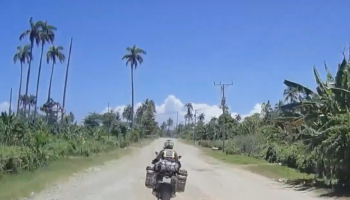“This article is published with the permission of RoadRUNNER Motorcycle Touring & Travel Magazine. It is not for sale or redistribution. RoadRUNNER is a bimonthly motorcycle touring magazine packed with exciting travel articles, splendid photography, maps and GPS files. Subscriptions are available online (www.roadrunner.travel), or by calling (866) 343-7623.”
Outfitted with essential Touratech accessories, Simon and Lisa Thomas have been travelling the world on their motorcycles for over eleven continuous years. They’re avid riders, writers and photographers. This is part 1 of 2, in their profile of North Africa.
Clinging precariously to the northern tip of Africa, Ceuta is the last Spanish enclave in this vast continent and from where we’ll start our Moroccan adventure. At the border, it’s late November and 100 degrees. We park in the shade, and Lisa has to remain behind, guarding the bikes, because, under Moroccan law, wives are still regarded as ‘property’. The officials won’t deal with her. Visiting the row of low beige offices, I collect an assortment of brightly colored immigration documents and start the process, which is surprisingly fast in this far-flung outpost.
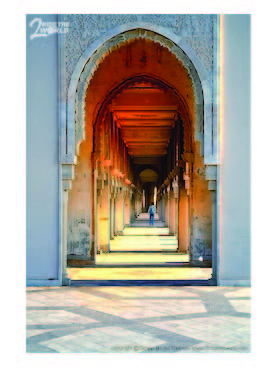 With the warm, lapping waters of the Mediterranean to our left, the cool sea breeze flowing through the vents in our jackets is a welcome relief. On the outskirts of Tétouan the air is sweet, a piquant mixture of scents from the orange, almond and pomegranate orchards that encircle this ancient city. Dusk is setting in as we walk into the medina (old town) through a vast stone gate of ornate interwoven arches to squeeze our way down a smoky, teeming alley, thick with the din and perfumes of North Africa.
With the warm, lapping waters of the Mediterranean to our left, the cool sea breeze flowing through the vents in our jackets is a welcome relief. On the outskirts of Tétouan the air is sweet, a piquant mixture of scents from the orange, almond and pomegranate orchards that encircle this ancient city. Dusk is setting in as we walk into the medina (old town) through a vast stone gate of ornate interwoven arches to squeeze our way down a smoky, teeming alley, thick with the din and perfumes of North Africa.
The Muslim festival of Ramadan has just started, and we eagerly join in the search for food as the day (and the daily fast) ends. Following the crowd, we find two plastic chairs at a small eatery. Abdul, a local silversmith, invites us to join him for his first meal of the day, celebrating the breaking of the fast. The hood of his gray-and-brown jellaba covers his head. We watch as he expertly uses only his right hand and pieces of bread to eat. We follow suit, devouring a rich mixture of syrupy sweet pastries and spicy vegetable soup, all served with strong coffee.
Riding the Rif Mountains
As we travel south of the city, the bikes are rumbling contentedly, and we hug the rugged contours of the Rif Mountain range. This is an unspoiled land of interlocking valleys and hidden gullies. Overhead, craggy limestone peaks tower, their jagged heights piercing a bright cloudless sky. We take a cautious pace, anxiously aware the region has a reputation for physical violence aimed at passing tourists who stray too close to the drug-growing areas. Fig trees, prickly pear and cacti lurk in the shadows of the steeper ravines. Thick cedar forests and olive groves blanket the slopes to our left, and the pungency of cannabis and peppermint wafts from the lower terraces. Morocco is sensory overload at its most intoxicating.
In the uppermost reaches of the Djibála range of the Rif Mountains, we pass the blue village of Chefchaouen, a favorite stop-off for the adventurous traveler. By late afternoon we are ascending, swapping ravines and gullies for farmed mountain terraces. The lower Rif range spits us out onto the fertile, open plains of Saïss. On a windswept plateau, we pull to the side of the road and take in the majestic view. We are dusty, thirsty and tired. Sprawling into the distance, the mystical city of Fez, and beyond the walled city, on a milky pink horizon, the teeth of the middle Atlas await us.
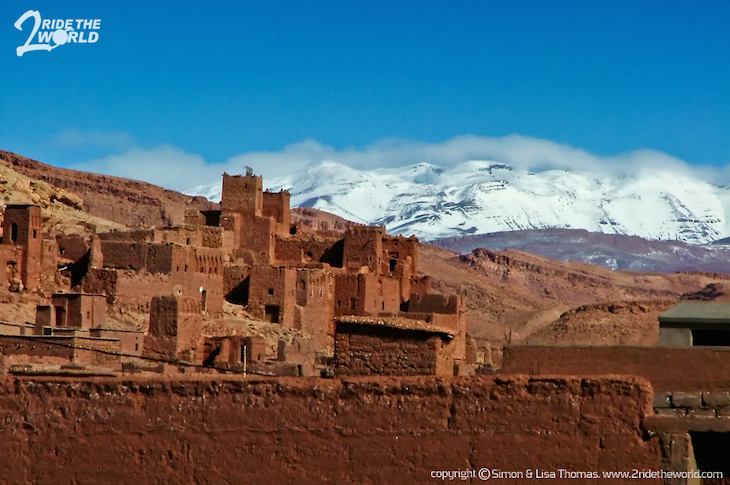
Exploring Morocco’s Imperial Cities
We find a small hotel room for $8, chosen more for its secure parking than its dusty brick walls. There is no running water until 7pm, so we quickly freshen up with wet wipes, lifting the gritty dirt from our sun-kissed cheeks. The first of Morocco’s imperial cities is just begging to be explored. An arid breeze massages the fortified ramparts of Morocco’s’ largest market, or medina, and inside we fall under Fez’s spell. Walking through the tangled narrow streets and alleys of what many consider the spiritual and cultural heart of Morocco, we are dizzied by the unfamiliar but exciting smells.
Soon we are caught up in the tide of the city’s bustle, the jostle of passing mule carts and jellaba-robed masses. The rugs adorning dusty brick walls look ancient, and swarthy, toothless old men squint suspiciously and then slowly smile at as we pass. Life courses through a web of light-dappled alleys no wider than my outstretched arms—little has changed here in centuries. On Talaa Kabira, the main street of the market, hundreds of small stalls spill into the street, a seemingly chaotic mix of sellers plying everything from bath plugs to embroidered yellow slippers, kaftans, and huge bags of ochre and yellow spice.
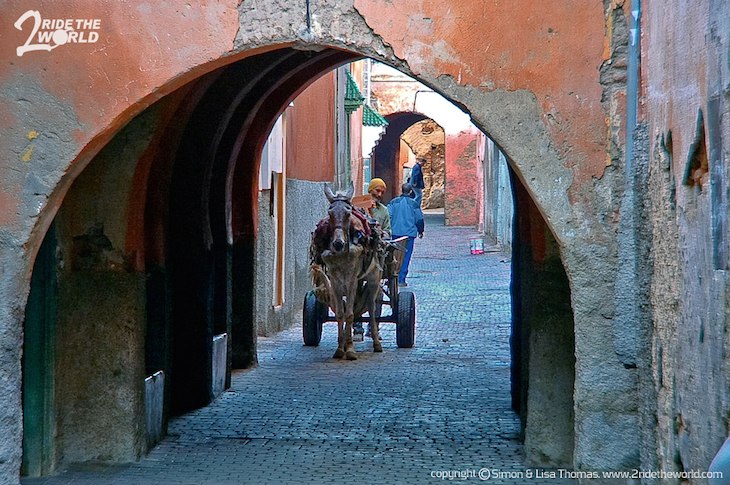
The next day, we ride the narrow, stony dirt track up to the main road and turn west for Casablanca. We follow the main road carefully past Meknes, the third Imperial city, as taxis weave around laden carts. Street vendors vying for our attention leap in front of us, only to jump back at the last possible moment. West of the city, we ride into open space and vivid sunlight, feeling at once a more comforting sense of freedom. Here and there thick cedar groves flank the parched plains, and several emerald-green date and palm groves cozy up to the road’s edge.
Casablanca is surprisingly modern, its smooth contemporary skyline punctuated by the “Finger of God,” the towering 656-foot minaret of the Hassan II Mosque. With its majestically faded architecture and worn colonial boulevards, this rough-edged metropolis of four million feels familiar to us, more akin to a forgotten city in Southern Europe, than its opposite twin, Fez. We are not here to sightsee but to pick up our visas for Mauritania, the long war between Morocco and Mauritania making it impossible to acquire them on the border
Victorious in our efforts at the consulate and with our visas safely secured, we sit outside our hastily pitched tent, sipping coffee from metal mugs and reflecting on the day. We watch the aquamarine sky turn indigo then black, with the haunting song of at least a dozen muezzins calling the faithful as our evening serenade.
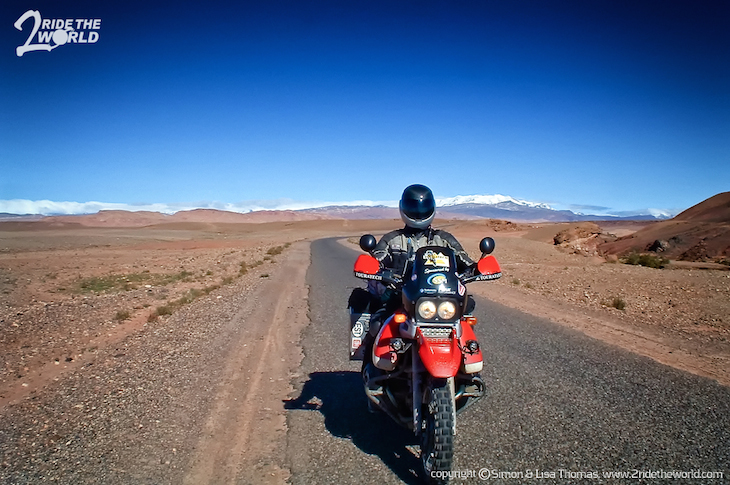
The next morning we leave the city behind and ride southwest toward the mountain town of El Bourouj. The landscape turns from a beige, dusty gray to tangerine as we climb, nearing the Atlas Mountains. At d’Ouzoud, the artisans swarm, offering their arts and crafts when we stop for water, though they seem more interested in our bikes than in landing a sale. Guides eager for business tug on our jackets, trying to overtop the other in a buzz of frenzied yelling, and with each of them fervently pleading for us to pitch our tent at their site. But keen to escape such attention, we push on.
Read more about Simon and Lisa Thomas see more photos of their adventures around the globe at: http://2ridetheworld.com
“This article is published with the permission of RoadRUNNER Motorcycle Touring & Travel Magazine. It is not for sale or redistribution. RoadRUNNER is a bimonthly motorcycle touring magazine packed with exciting travel articles, splendid photography, maps and GPS files. Subscriptions are available online (www.roadrunner.travel), or by calling (866) 343-7623.”
